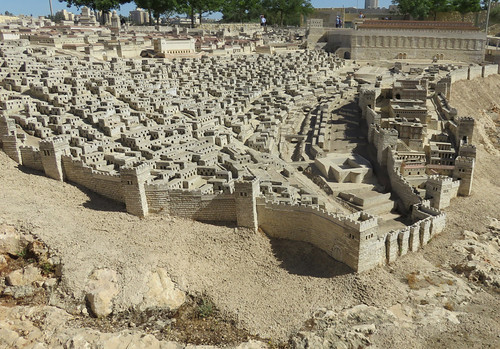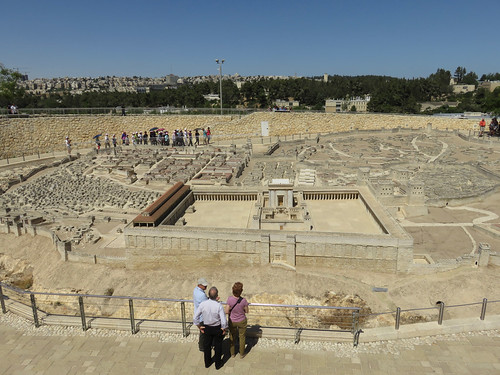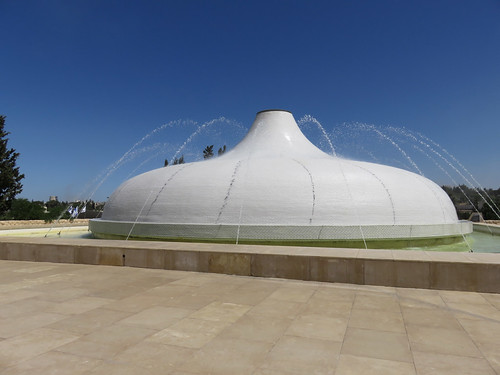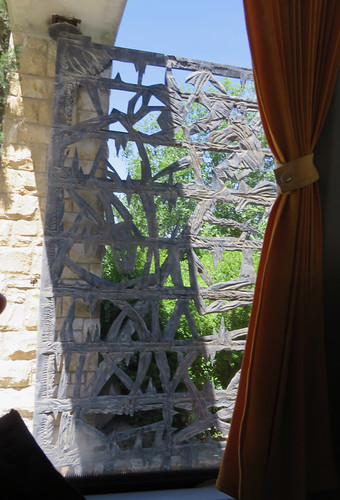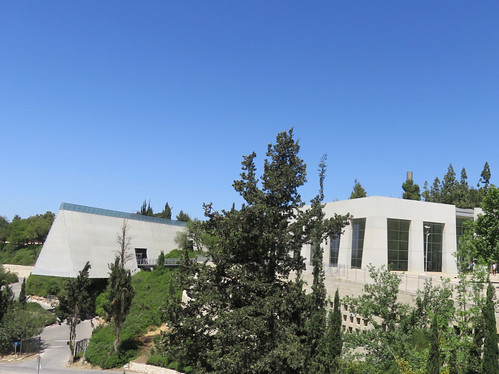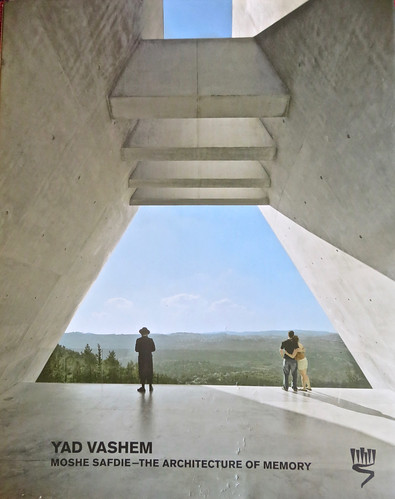Israel 2017–Day 8
We start the day at the lavish breakfast buffet on the eleventh floor of The Herbert Samuel“-named for a late 19th c. English colonial governor active in early efforts to prepare the way for making Palestine a Jewish homeland.
First stop is the Israel Museum, a huge complex near the Hebrew University where my conference will take place in a few days. Gabi leads us to a model of the City during the first century BCE centered around the Second Temple, whose massive reconstruction was sponsored by Herod the Great.
This was the center of Jewish worship, drawing populations from all over Israel for frequent festivals to which they brought offerings for sacrifice and to support the priests, who apparently were working closely with the client king.
The Temple on the Mount was destroyed by the Romans in 70CE, reconstructed as a mosque by followers of Muhammed in 691, captured by Christian Crusaders in 1099, and recaptured by Muslims in 1187. Since then it has remained in the possession of the Muslim priesthood. Its Dome of the Rock is supposedly the site of Abraham’s sacrifice of his son–they claim it was Ishmael rather than Isaac– as well as Jesus’ Ascension. Today non-Muslims are permitted to visit the Mount only during very limited hours through a designated entrance and are prohibited from entering the Dome.
We move on to the Shrine of the Book, whose roof resembles the top of the clay jars which held the Dead Sea Scrolls stored in caves at Qumran and now housed there.
One enters through an elegant courtyard and passes through a tunnel-like vestibule to a circular sanctuary at the center of which the original scrolls are displayed in a round case topped by a large wooden column. It takes me awhile to recognize its shape with a sudden tactile memory. It’s the upside-down handle of a torah”one of the two which turn the scrolls to the next portion and which are gripped tightly, angled upward and raised to reveal the writing in the sacred book to the congregation before it is wrapped and returned to the ark. I got to hold those handles only once, on the day of my Bar Mitzvah at age 13.
Adjoining the shrine, we’re led to small chamber to watch a film about a contemporary variant on the ancient practice of miniaturizing the Scriptures. This was done by a team of computer scientists who developed a technique for inscribing the whole text of the Hebrew Bible with lasers on a tablet the size of a pinhead.
From the Israel museum it’s not far to the summit of Mount Herzl, which houses Yad Vashem, the research center and memorial of the Holocaust. As in the archaeological digs, this country’s massive investments in history, the arts and the sciences are devoted to strengthening and validating Jewish national identity. At Yad Vashem, the reason for the depth of this commitment becomes obvious.
Entering the sculptured gates of the huge facility occupying the mountaintop, I’m reminded of the apprehension of Aeneas and Dante entering the gates of hell.
I’ve always been fearful of reading books, watching movies, and going to museums about the Holocaust due to my early childhood with parents who were refugees from the Nazis and stories about relatives who were their victims. Nevertheless, on rare occasions, I’ve confronted that past and felt the consequences. This trip itself is one of those occasions.
The site is approached through more gateways and a bridge that lead to a largely subterranean triangular chamber illuminated by skylights protruding from the earth at its apex.
The place is always crowded–with groups of school children, with young soldiers who are required to visit it, with local residents and with innumerable tourists. One wanders through a series of displays opening outward from the central triangular hallway that show the progression from scenes of European Jewish life before the coming of the Nazis to the growth of their anti-Semitic propaganda and their political power to the deepening viciousness of persecution to the outbreak of war, to the torments and deportations, the conditions in the death camps and finally to the end, which killed two thirds of Europe’s Jewish population of nine million people.
The material is presented with artifacts, murals, documentary footage, and videoed interviews with survivors. Though that material is not as harrowing as it could be, and though I avert my eyes and ears from the most painful evidence and testimony, my body repeatedly takes over with an unwilled response. My hand lifts to my cheek, I sob and shed tears. Next day on the wall of a Church, I recognize the gesture and the feeling.
The most powerful moment comes when the gradually descending slope of the central pathway turns upward, revealing an expanse of forest and sky through the opening. Having for once put my camera away upon entering this museum, I regret not being able to capture the effect of this remarkable vista. But I find it on the cover of a book I later purchase.
One approaches the opening only beyond the exhibits showing the exodus of survivors from Europe and the establishment of the state of Israel as their home.
It takes a while but not very long, to recover my normal sense of self, to rejoin Jan, from whom I’d needed space while in the museum, and to return to the others on the tour, a process also facilitated by the architecture of the site. Afterwards, we ride the new light rail train running smoothly back to our downtown hotel.

